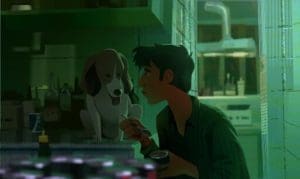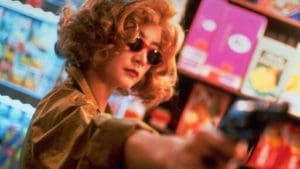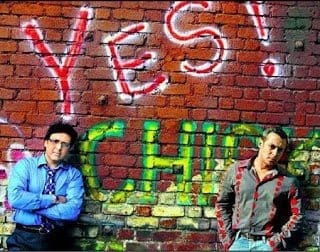
Opening Montage
There’s a bleached blonde wig, a pixie cut, and cops ‘223’ and ‘663’ that tell us the story of Chungking Express, a dreamlike melody that melts time into unintelligible tints and distorts genre in ways that break the rules of filmmaking. Released in 1994, and recently restored, it has captured the hearts of arthouse fans and cinema lovers.
The film unfolds like reeling polaroids, vintage black and white amidst its stark modernity or the saturating contrast of its color. Shot in 23 days in the midst of making Ashes of Time, Director Wong Kar Wai interlaces time and emotion into an unintelligible knitwork of striking naturality. You’re almost fooled by how it’s like a rom-com that reads almost like a crime scene/noir murder mystery. But really, the movie is like scrolling through painfully aesthetic romance Pinterest pins; both butterfly inducingly sweet, and poignant thorn-like heartache.
Technique & Cinematography
Visually, action and movement are blatantly blurred, almost as if the scenes tell you to pay more attention. The action scenes are shot remarkably with slow-mo and speed-up effects, and it results in the main characters being highlighted by the blurry disarray of the anonymous crowds in a major city. The restored version of the film quite possibly highlights the detailed color pops and contrasts that pepper each scene even more vividly.

The film’s first half is doused in darkness and brilliant yellow with some blue tones. 223’s apartment is entirely blue-hued as he opens his 30 cans of pineapples that have expired by a day. The bright yellow of the cans of expired pineapple representing his girlfriend’s expired love is framed by an entirely awash in green light. The second half is all bright blue water in fish tanks and neon green overtones.
The Story in The Characters

Bridgitte Lin embodies the Hollywood noir-ish femme fatale with her blonde wig, shades and red lipstick. Her high heels strut down the streets as she trains a group of Indians to traffick drugs, with whom she eventually falls out. We aren’t given any information about her crimes or why she commits them, only vivid inter-cultural visuals and the occasional gunshot scene. Indeed, there are quite a bit of Hindi and Indian cultural elements in the film’s first half, which made it extremely enjoyable for me to watch. The first half comes to an end with cop 223 very ironically running into her at a bar as he laments his lack of love life, and she tries to think of a way out of her criminal problems. They end up spending the night at her place, drunk, with 223 watching old films and eating chef’s salad, and Lin knocked out on her bed with her heels still on.
Kar-Wai’s camera is handheld and captures the characters in the sort of cramped spaces that only a globalized city can offer.
The second half of the film kind of screeches to a halt, and starts to sleepwalk its way into California Dreamin’ by The Mamas & The Papas. It’s a slow romcom, with Faye Wong crushing on heartbroken cop 663. It’s mostly just very charming, if not slightly stalkerish, with Faye frequenting his apartment to clean, remodel, and on occasion, sneak sleeping pills into his bottles of water when he mentions he’s having trouble sleeping. 663 is too lovelorn to even notice; in a remarkably hilarious scene, he monologues about how he’s starting to notice the most minor things in his life; not having noticed that his entire apartment has completely changed. Faye is obsessed with California Dreamin’ in the sense that it plays a total of 8 times in the film. She eventually does fulfill her dream of going to California; at the end of the film, 663 gets stood up. She leaves him a letter, with a hand-drawn boarding ticket that he accidentally soaks in rainwater. In the scene when he opens the letter wet with rain, it literally looks like a watercolor painting comes to life.

Rolling Credits
223 and Lin’s part of the story is greyer, in that it emphasizes the characters’ aimlessness. Without friends, family, or lovers, they are like wraiths that wander around in search of an anchor. The second half ends on a more hopeful note; the once muted brightness springs to life as Faye and 663 reunite a year later, in the same restaurant she used to work at. He has quit his job, and smiles at her openly as she draws him another boarding pass and answers her, “Where do you want to go?” with a, “Wherever you’ll take me.”




Be the first to comment